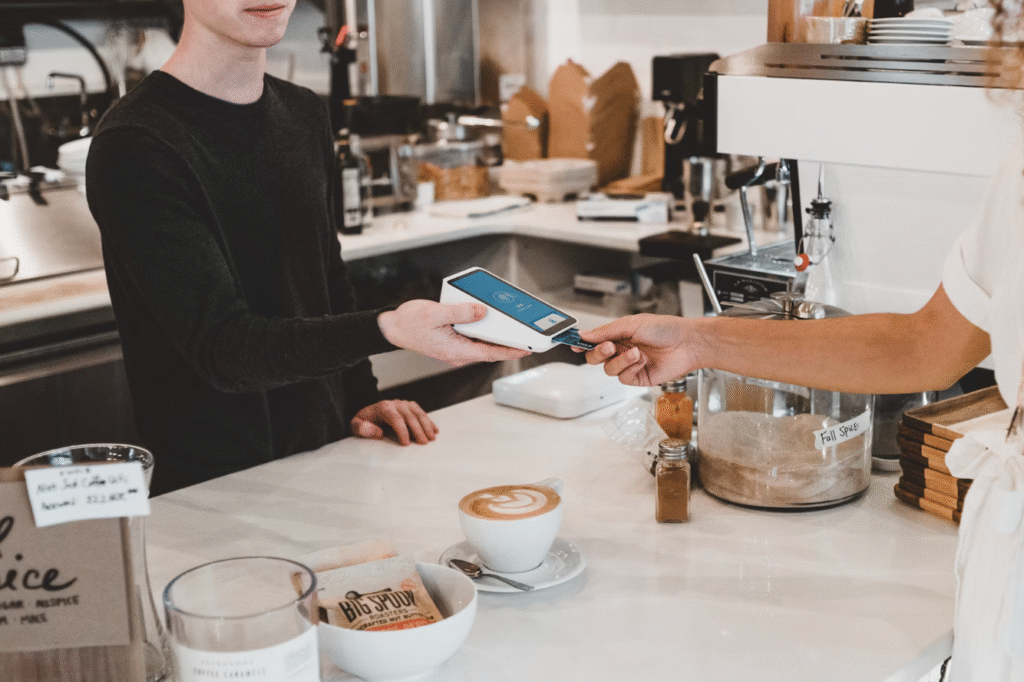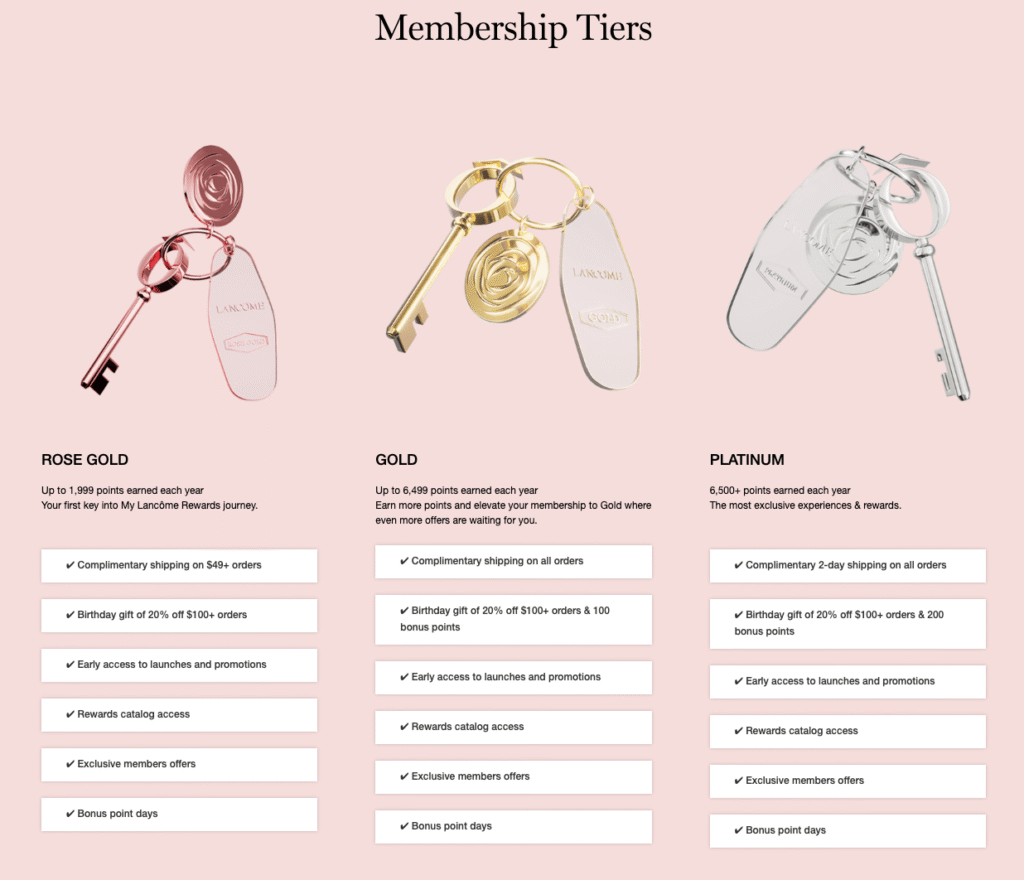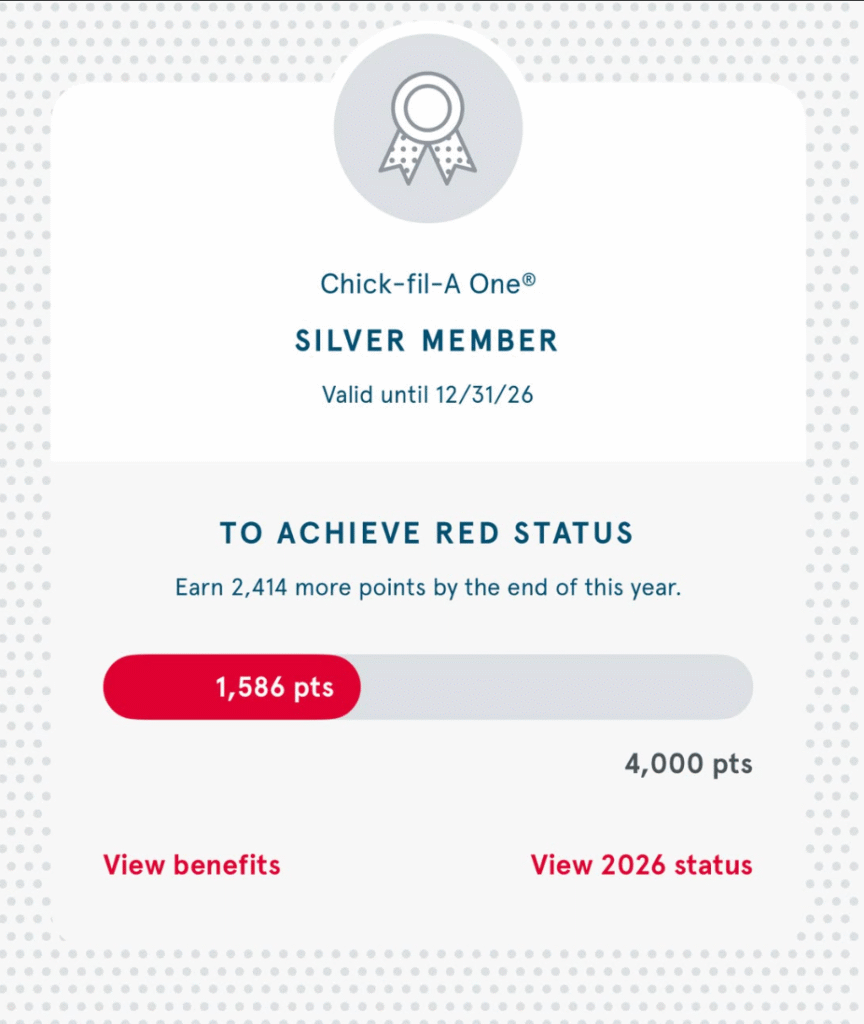Estimated Reading Time: 10 minutes

Last week, a diner spent $12 at your restaurant.
This week, they spent $40.
Same table, same pasta — but this time they wanted to hit the Gold tier reward.
That’s the quiet magic of a restaurant tiered loyalty program. These tiered rewards programs turn your regular customers into motivated spenders without you lifting a finger. When designed well, tier-based loyalty programs reward progress, fuel competition (the fun kind), and make guests feel like VIPs long before the free dessert shows up.
Forget punch cards. It’s 2025. Today’s diners crave progress and recognition. They want every meal to count toward something bigger. Say, a free entree or that exclusive “VIP Member” badge they’ll proudly flash online.
The best part? Many tiered restaurant loyalty programs achieve this without deep discounts.
It’s psychology, not luck. The higher they climb, the harder they fall… for your brand. And when it costs up to 5 – 25 times more to attract a new customer than to retain an existing one, that’s a game worth playing.
So, are tiered loyalty programs for restaurants really worth it? Let’s break down real tiered loyalty program examples and explore how the right structure can turn diners into die-hard fans.
What Tiered Loyalty Really Means
At its core, a tiered loyalty program is a structured rewards system where customers earn their way into higher levels (Bronze, Silver, Gold, or Platinum). Each level comes with its own set of perks — free menu items, birthday surprises, or priority bookings.
Unlike a one-size-fits-all points program, a tiered model adds a sense of progress and achievement. Customers don’t just get rewarded for spending; they’re rewarded for staying loyal.
Levels, Rewards, and Status Psychology
Here’s where it gets really interesting… it’s not entirely about the rewards themselves, but how they feel.
Tiered programs tap into status psychology — the universal desire to be recognized and rewarded for effort. People love climbing ladders, unlocking badges, and feeling like insiders.
Think about it this way: “Gold Member” sounds far more exciting than “10 points earned”. It’s not just semantics; it’s status signaling.
And with platforms like SimpleLoyalty, restaurants can easily automate these tiers, track spend thresholds, and create that same “level-up” satisfaction that keeps diners hooked long-term.
Why Restaurants Benefit from Tiered Models
Restaurants aren’t just feeding people; they’re fighting for attention. A tiered loyalty program helps your brand stand out by making loyalty visible and rewarding.
Driving Repeat Visits
Tiered systems keep customers coming back because they always have something to look forward to. Imagine telling your regulars, “You’re just two visits away from hitting Gold status and a free entree”. That one sentence can increase visit frequency overnight.
Around 79% of consumers say loyalty programs make them more likely to continue buying from a brand. For restaurants, that could mean an extra visit every week (and believe it or not, that adds up quickly).
Encouraging Higher Spend per Visit
Tiered loyalty programs don’t just boost frequency; they increase ticket size. When customers know that spending just $10 more can push them closer to the next tier (and that complimentary birthday steak), they’re more likely to splurge.
You’re not forcing upsells; you’re rewarding ambition. It’s a win-win situation. Customers feel accomplished, and you see a healthy lift in average order value.
Real Examples of Tiered Success
From luxury fashion to fried chicken to French beauty counters, tiered loyalty is proving one thing— status sells.
Hugo Boss XP
When Hugo Boss rolled out its HUGO BOSS XP (Experience) loyalty program, it wasn’t just a rebrand; it was a rethink of what “status” means in modern retail. Instead of the usual “buy more, earn points, repeat”, Boss designed a system that feels alive.
- There are four distinct tiers (Bronze, Silver, Gold, and Black), each representing not just spending power, but relationship depth.

- You don’t just earn points; you earn “XP tokens” that unlock tailored rewards depending on how you engage. For instance, you might get welcome tokens when you join, extra tokens when you buy from a specific design line, or even surprise bonuses if you attend in-store events.
- Their loyalty program maintains membership status for a minimum period so that status doesn’t feel so fragile or fleeting.
- Perks escalate meaningfully: early access, free/express shipping, global concierge, invite-only events and styling services. Not just “a few extra points”.
What restaurants can learn from Hugo Boss XP
Tiered loyalty shouldn’t just be about points but about pride. Imagine if your restaurant’s top-tier members got early invitations to a seasonal tasting, a behind-the-scenes kitchen tour, or a private chef’s table. You’d be doing exactly what Hugo Boss does best: turning recognition into emotion, and emotion into long-term loyalty.
Chick-fil-A One
On the other end of the spectrum, Chick-fil-A One proves that you don’t need to sell luxury handbags to make tiered loyalty feel premium. Their system is straightforward yet brilliant: four tiers (Member, Silver, Red, and Signature).
- Members can use points to redeem free meals or gift rewards to friends and family. That’s how Chick-fil-A ties generosity and status together.
- Each tier unlocks a little more joy: Silver members start getting bonus points and birthday treats, Red members enjoy personalized experiences and priority service, and Signature members (the crème de la crème) gain access to insider events, first dibs on new menu items, and even surprise invitations from local franchise owners.

What restaurants can learn from Chick-fil-A
You don’t need chandeliers and caviar to make loyalty aspirational. Offer tangible perks that celebrate generosity. Think “treat a friend” rewards or referral bonuses. A loyalty program that feels good to share becomes one that grows effortlessly.
Lancôme
Lancôme didn’t just dip its toes into tiered loyalty; it made the whole thing look like a runway show. Its My Lancôme Rewards program turns every purchase, review, and even social interaction into progress toward prestige.
- There are three named tiers— Rose Gold, Gold, and Platinum. Each one feels aspirational yet attainable, with perks that balance glamour and practicality.

- At the top, Diamond members enjoy perks like early access to launches and promotions, rewards catalog, birthday gifts, and complimentary 2-day shipping. What makes Lancome stand out is how it injects emotion into every tier. Even Rose Gold members get small but thoughtful gestures like exclusive member offers.
- There’s psychology at play here too. Every milestone feels like a celebration— a subtle reminder that beauty loyalty is about feeling seen.
What restaurants can learn from Lancome
Recognition should start at hello. Offer meaningful perks at entry level, like birthday desserts or early access to weekend reservations. Then, as diners move up, reward them with richer experiences. When loyalty feels personal, customers naturally want to climb higher.
Common Mistakes to Avoid
Even the best loyalty programs can backfire if you’re not careful. Here are the most common traps (and how to dodge them):
1. Overcomplicating Tiers
The fastest way to lose customers’ interest? Make your loyalty chart look like an algebra problem. If people can’t instantly understand how to earn or move up, they’ll stop trying. And when motivation dies, loyalty dies with it.
Keep your structure simple, transparent, and visual. A progress bar like “You’re 2 visits away from Gold!” works far better than fine-print explanations about point ratios. Clear goals trigger the dopamine rush that keeps diners chasing that next tier.
Pro tip: Name your tiers intuitively. “Silver Spoon”, “Golden Fork”, and “Chef’s Table” say more than “Tier 1, 2, and 3”. Clarity + creativity = engagement.
2. Ignoring Low-Tier Members
Every “Gold” member starts somewhere. If your lowest tier feels like the leftovers of your loyalty program, customers won’t stick around long enough to climb.
You want your perks to feel welcoming, not forgettable. Think small but personal: birthday discounts, early access to weekend reservations, or even a “Welcome to the Family” message from your head chef.
Low-tier members are your pipeline to profitability. Nurture them early, and they’ll naturally level up over time.
3. Forgetting the Human Touch
Automation is great… until it starts to feel robotic. Loyalty is emotional, not mechanical. If every message reads like it was written by a chatbot, your customers will feel like data points instead of people. Add warmth. Add storytelling.
Send a quick note like, “Hey, we saw you just hit Gold — congrats! Dinner’s on us next week”. The tech should support the connection, not replace it.
4. Not Tracking or Evolving
A loyalty program isn’t “set and forget”. Consumer preferences evolve, inflation happens, and what feels rewarding today might feel stale six months later.
You should be tracking your loyalty data as closely as you track your food costs. Which tiers are most active? What rewards are actually being redeemed? Are people dropping off after Silver?
Use that data to adjust your perks and thresholds. Your loyalty program should grow with your customers, not leave them behind.
5. Overpromising and Underdelivering
Few things hurt trust faster than a flashy program that falls flat in execution. If your terms change too often, or if rewards are “out of stock”, customers will start questioning whether your loyalty program is more marketing bait than meaningful benefit.
The solution? Be realistic with rewards and timelines. If you promise a free entree after 10 visits, make sure it’s available (and easy to redeem). Reliability builds credibility.
Best Practices for Restaurant Tiered Loyalty
So, what does success actually look like? Here’s how to design a tiered loyalty program that not only works… but wows.
Make Progress Feel Achievable
If your first tier feels too far away, people won’t even try. The key is to design milestones that feel within reach. Chick-fil-A does this brilliantly. Members can see exactly how many points they need to hit Silver or Red, and progress updates appear right in the app. That small nudge keeps engagement high and motivation stronger.

Reward Emotion, Not Just Spending
A common mistake is rewarding only purchases. But true loyalty often comes from interaction. Lancôme, for instance, gives points for writing reviews, attending events, or sharing content— creating emotional touchpoints that go beyond transactions. Your restaurant can mimic this by rewarding feedback or birthdays.
Refresh, Don’t Replace
Over time, loyalty fatigue sets in (especially if the rewards never evolve). Refreshing your tiers with new perks or seasonal experiences keeps things exciting. Think: a “Summer VIP Tasting” for Gold members or “Double Points Week” for all. The goal is to make loyalty feel alive, not static.
Conclusion
At its core, a tiered loyalty program isn’t just about rewards but about recognition. The best brands have mastered this art. And as for restaurants, that same emotional pull can turn casual diners into lifelong advocates. When you name your tiers, make progress feel exciting, and reward experiences.
And the best part? You don’t need a massive marketing team or budget to pull this off. Platforms like SimpleLoyalty make it easy for restaurants to launch tiered programs that feel just as exclusive.
And in a world where everyone’s chasing the next new customer, maybe the smartest move is to make the ones you already have feel like VIPs.

